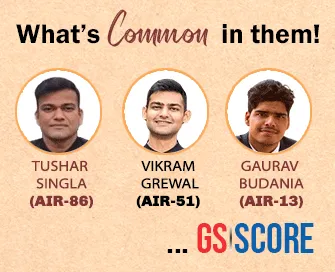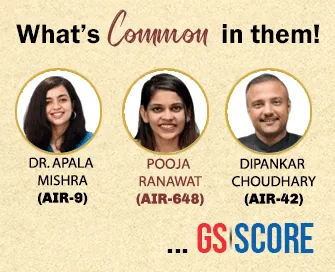

2nd June 2025 (12 Topics)
Mains Issues
Context
In late May and early June 2025, widespread torrential rainfall triggered severe floods, landslides, and infrastructure collapse across the Northeastern states of India. Over 3.64 lakh people were affected in Assam alone, while more than 900 houses were damaged in Manipur and Mizoram. Tourism, connectivity, and public safety were severely impacted. This event underscores the region’s high vulnerability to compound climate and environmental hazards.
Natural Disasters in the Northeastern Region – Causes, Consequences and Governance Challenges
- Geophysical and Environmental Drivers of the Disaster
- Climate-Induced Extreme Weather Events
- The Indian Meteorological Department (IMD) has noted a sharp rise in intensity and frequency of pre-monsoon downpours in the Northeast.
- The IPCC Sixth Assessment Report (AR6) and India’s National Climate Vulnerability Assessment identify the Northeast as a high-risk zone for extreme climate variability, including flash floods and cloudbursts.
- Fragile Geology of the Eastern Himalayas
- The region is part of the young fold mountains, making it structurally weak and prone to frequent landslides, soil creep, and rockfalls.
- Saturated slopes, especially in Sikkim, Arunachal Pradesh, and Mizoram, collapse under heavy rainfall.
- Riverine and Flash Flooding Dynamics
- The Brahmaputra and Barak river systems, along with Teesta and Subansiri tributaries, overflow during intense rainfall, breaching embankments in Assam and Manipur.
- Riverine floods were worsened by siltation, unregulated construction, and obsolete floodplain zoning.
- Structural and Institutional Shortcomings
- Unplanned Urbanisation and Infrastructure Stress
- Construction on steep, landslide-prone slopes (e.g., Aizawl, Gangtok) continues unabated, violating building norms.
- Lack of stormwater drainage, encroachments, and informal housing in Imphal East and Senapati districts worsened flood impacts.
- Inadequate Disaster Preparedness and Inter-State Coordination
- Delayed early warning and evacuation in Sikkim and Manipur exposed deficiencies in the functioning of District Disaster Management Authorities (DDMAs).
- Rescue efforts, such as IAF's Mi-17 airlift in Arunachal, highlight central capacity but coordination remains fragmented across state borders.
- Environmental Degradation due to Land Use Practices
- Shifting cultivation (jhum) and deforestation in Mizoram, Arunachal, and Nagaland reduce slope stability and increase runoff velocity.
- Infrastructure projects, including roads and dams, have flouted Environmental Impact Assessment (EIA)
- Social and Economic Fallout
- Impact on Livelihoods, Safety, and Connectivity
- Over 8 lakh people in Assam and 1,500 tourists in Sikkim were stranded due to road and rail disruptions.
- Agricultural loss, especially in flooded plains of Manipur and hilly farms in Meghalaya, risks food insecurity and income collapse.
Way Forward: A Multi-Sectoral and Region-Specific Strategy
- Strengthen Early Warning Systems (EWS) and Forecasting: Invest in real-time flood forecasting and mobile-based early warnings, especially for hill districts.
- Revise Urban and Hill Area Planning Norms: Introduce hill-specific building codes, zoning laws, and mandatory landslide vulnerability mapping before construction approvals.
- Promote Ecosystem-Based Adaptation: Restore degraded forest slopes and incentivise alternatives to jhum through agroforestry and MGNREGA convergence.
- Strengthen Inter-State Disaster Coordination: A North-East Regional Disaster Risk Reduction Authority can ensure collective floodplain management and shared EWS protocols.
- Mainstream Resilience in Development Planning: Ensure Environmental Impact Assessments (EIA) are scientifically rigorous and not bypassed through exemptions.
PYQ
|


Mains Issues
Context
The Telangana government is introducing a Composite Backwardness Index (CBI) based on data from a caste survey covering over 3.5 crore residents. Developed by an expert panel, the index uses 42 indicators across nine categories to scientifically assess caste-wise backwardness, moving beyond population-based assumptions
Redefining Backwardness: From Demographics to Measurable Disparities
- Evolution of Caste-Based Metrics in India
- Legacy Approach: Population as a Proxy for Backwardness
- Traditionally, backwardness was inferred from population size, rooted in the assumption that numerically larger groups faced higher marginalisation.
- This approach was exemplified in the Mandal Commission (1980s), which surveyed only 50 lakh individuals and used 11 indicators.
- Paradigm Shift: Emphasis on Empirical Multidimensional Data
- The Telangana model focuses on how backward a caste is, not how many belong to it.
- The first-of-its-kind index globally shifts from quantitative caste enumeration to qualitative deprivation analysis.
- The Composite Backwardness Index (CBI): Methodology and Structure
- Survey Design and Scope
- Over 5 crore respondents across Telangana participated in the survey.
- 74 detailed questions captured socio-economic, educational, and discriminatory experiences.
- Statistical Framework
- The committee identified 42 statistically significant indicators across 9 categories, such as:
- Education
- Housing and Infrastructure
- Income and Debt Dependency
- Landholding
- Technology Access
- Experiences of Discrimination (e.g., in temples)
- Scoring and Ranking
- Castes were assigned scores on a 0 to 126 scale.
- Higher scores indicate greater backwardness.
- Castes were placed in quartiles, enabling targeted affirmative action policies.
- Institutional Mechanism and Expert Oversight
- The Expert Working Group is headed by Justice B. Sudarshan Reddy.
- Praveen Chakravarthy, convener and data economist, spearheaded the index’s technical design.
- Implications for Social Justice and Policy-Making
- Scientific Redefinition of Affirmative Action
- The index enables data-validated identification of socially and educationally backward classes (SEBCs).
- Can help redesign reservation policies based on actual deprivation rather than perceived status.
- Disaggregated and Targeted Welfare Delivery
- Helps eliminate intra-group inequality by distinguishing between relatively better-off and extremely backward sub-castes.
- Enabling Evidence-Based Governance
- The move lays the foundation for federal-level caste census debates and re-ignites calls for data transparency in social justice metrics.
Way Forward
- Institutionalisation of the Index Nationwide: NITI Aayog and Ministry of Social Justice could consider national adaptation of the CBI for uniform affirmative action metrics.
- Legislative Backing and Judicial Endorsement: The use of the index for reservation and welfare allocation must be supported by legal frameworks and Supreme Court scrutiny to ensure constitutionality.
- Data Transparency with Privacy Safeguards: The government should release aggregated caste-wise data for academic and policy use while ensuring data privacy and anonymity.
- Periodic Updates and Dynamic Tracking: As socio-economic conditions evolve, the CBI should be updated periodically to reflect real-time conditions of caste-based deprivation.
|
MANDAL COMMISSION: Background
Methodology & Findings
Key Recommendations
Indra Sawhney Case (1992) – Supreme Court Verdict
|
PYQ:"‘Reservation is needed to remedy historical injustice. However, it should not be allowed to become a tool for perpetual patronage.’ Critically examine this statement in the light of recent developments in reservation policy." (2021) |


Mains Issues
Context
The International Monetary Fund (IMF) released its GDP estimates and projections for 2024–2030, indicating that India is projected to surpass Japan by 2025 to become the world's fourth-largest economy (in nominal GDP terms), and may become the third-largest economy by 2028. This sparked political discourse, with claims linking the rise in rankings to governance performance, while economic experts cautioned against over-reliance on GDP as a sole indicator of development.
GDP Rankings and Development Metrics: A Need for Nuanced Economic Assessment
- Understanding GDP Rankings
- Nominal GDP Estimates: Based on IMF's market exchange rate method, India’s GDP is projected to be $4.187 trillion in 2025, marginally higher than Japan's.
- India becomes 4th largest economy (nominal terms) by 2025.
- Projected to become 3rd largest by 2028.
- Purchasing Power Parity (PPP) Estimates: Under PPP terms, India has been the 3rd largest economy since 2009. However, it doesn’t show rank improvement till 2030, according to IMF projections.
- Limitations of GDP as a Metric of Development
- GDP fails to capture:
- Income inequality
- Health and education indicators
- Quality of employment
- Unpaid domestic and care work (mostly by women)
- GDP Politicisation: Increasing use of GDP rankings in political discourse risks oversimplifying complex socio-economic realities.
- Methods of GDP Comparison
- Market Exchange Rate (MER) Method:
- Converts national GDP to USD using current exchange rates.
- Subject to volatility and misleading time series comparisons.
- Good for current account-based comparisons (e.g., trade, remittances).
- Purchasing Power Parity (PPP) Method:
- Adjusts GDP based on cost of living and price level differences.
- Suitable for comparing living standards and internal purchasing power.
- Inflates GDP of developing countries due to lower wage and price levels.
- India’s Economic Reality Behind GDP Size
- Wage Inequality: As per ILO’s India Employment Report 2024:
- 76% of casual workers in agriculture and 70% in construction earn below the minimum wage.
- Informal Sector Concerns: Large informal economy with:
- Underemployment
- Wage suppression
- Prevalence of unpaid work (especially among women)
- The Big Economy Illusion: Per Capita GDP and Social Indicators
- India’s Per Capita GDP (2024):
- $2,711 (nominal), ranks 144th/196 countries.
- PPP per capita rank: 127th/196.
- Comparative Examples:
- Vietnam per capita GDP: $4,536
- Sri Lanka: $4,325
- Bhutan: $3,913
- Need for Broader Indicators
- Beyond GDP: Development assessments must include:
- Human Development Index (HDI)
- Multidimensional Poverty Index (MPI)
- Gini Coefficient (for inequality)
- Labour force participation rates
- Health and education indices
- Statistical Integrity:
- Calls for depoliticising GDP numbers and improving transparency in data systems.
Way Forward:
- Institutional Reforms in Statistical Governance:
- Establish greater autonomy and transparency in data generation.
- Adhere to globally benchmarked statistical norms.
- Develop Composite Indices:
- Integrate HDI, inequality metrics, employment quality, and environmental sustainability indicators into economic discourse.
- Policy Focus on Distribution and Inclusion:
- Increase public investment in health, education, and social protection.
- Promote formalisation of employment and ensure living wages for all workers.
- Enhance Productivity & Skilling:
- Bridge the gap between large GDP and low per capita income by boosting productivity, innovation, and inclusive growth.
PYQ:Q 1. "In what way could replacement of price subsidies with direct benefit transfer (DBT) change the scenario of subsidies in India? Discuss." (2015) Q 2. “Despite India being one of the fastest-growing economies of the world, it is still lagging behind in human development indicators.” (2019) |


Mains Issues
Context
India is increasingly grappling with extreme heat events that are more frequent, intense, and prolonged. According to the India Meteorological Department (IMD), heatwave days have surged from 177 in 2010 to over 500 in 2024, impacting public health, agriculture, energy, and livelihoods. This necessitates a shift from reactive to preventive climate adaptation strategies.
Expanding Impact of Heatwaves: Health, Economy, and Society
- Climate Change and Rising Heatwave Vulnerability
- Anthropogenic climate change has intensified heatwaves across India, particularly in the Indo-Gangetic Plains, Central India, and eastern coastal regions.
- IMD defines heatwaves based on temperature thresholds (?40°C for plains, ?30°C for hills) and deviations above the normal (?4.5°C).
- A spatial-temporal expansion is evident: more states experience longer and harsher heatwave spells, often exceeding three weeks.
- Public Health Implications
- Underreported mortality: Government data (2000–2020) cites 20,000+ heatstroke deaths; however, excess mortality estimates (Global Burden of Disease, 2021) place deaths closer to 155,000 due to secondary impacts like cardiovascular and renal failures.
- Vulnerable groups: Elderly, children, outdoor workers, and urban slum dwellers face disproportionate risks due to poor housing, limited medical access, and occupational exposure.
- Economic and Livelihood Losses
- Agricultural disruption: Heatwaves in 2022 led to a 5% fall in wheat yields, aggravating food insecurity.
- Energy demands: Peak power consumption hit a record 207 GW, straining grids and prompting blackouts.
- Labour productivity: McKinsey Global Institute projects heat-related productivity losses could cost 5–4.5% of GDP by 2030.
- Governance and Institutional Shortcomings
- Heat Action Plans (HAPs): While cities like Ahmedabad have pioneered HAPs (saving ~1,100 lives/year), most remain non-binding, underfunded, and urban-centric.
- Rural exclusion: Schemes like MGNREGA, NHM, and GPDP lack targeted heat adaptation components. Panchayats are under-resourced and untrained to manage extreme heat risks.
- Policy fragmentation: Absence of institutional coordination between IMD, NDMA, State Disaster Management Authorities (SDMAs), and local bodies.
- Neglect of Traditional Knowledge and Passive Cooling
- Traditional architecture (mud houses, jaalis, courtyards) provided natural insulation.
- Cultural practices like Navtapa informed work-rest cycles and hydration practices.
- However, post-1991 urban planning abandoned these for concrete-glass structures, with the National Building Code ignoring passive cooling design.
Way Forward:
- Strengthen Heat Governance Framework
- Make HAPs mandatory under the Disaster Management Act, 2005.
- Mandate coordination between IMD, NDMA, ULBs, and Panchayats for timely risk communication and emergency response.
- Localized and Inclusive Risk Reduction
- Prepare district-level heat vulnerability assessments.
- Allocate untied funds from the Fifteenth Finance Commission and District Mineral Funds for rural heat resilience infrastructure (shaded shelters, water kiosks).
- Leverage and Reform Existing Schemes
- Integrate heat resilience into PMAY (cool roofs), MGNREGA (tree planting, water bodies), and NHM (heat illness tracking).
- Encourage rooftop gardens, reflective paints, and green building codes through urban planning reforms.
- Community-based Communication Strategies
- Use multilingual, non-digital channels (e.g., community radio, posters, loudspeakers) for risk advisories.
- Popularize ‘feels like’ temperature to improve public comprehension of risk.
- Restore Traditional Ecological Wisdom
- Promote revival of water bodies, urban forests, stepwells, and passive cooling methods.
- Incentivize adoption of climate-responsive building designs and materials.
PYQ:"How does climate change impact the frequency and intensity of floods and heatwaves in India? What mitigation strategies can be adopted to minimize their effects?" (2022) |


Prelims Articles
Context
The annual Kheer Bhawani Mela pilgrimage by Kashmiri Pandits to Mata Kheer Bhawani Temple amid heightened security concerns following a recent terror attack in Kashmir. Despite challenges, the community's faith and resilience remain strong, supported by extensive security measures and government facilitation to ensure a safe religious gathering.
Kheer Bhawani Mela and Temple
- Location and Significance:
- The Kheer Bhawani Temple is located in the north-eastern region of Srinagar, Jammu and Kashmir.
- It is a revered Hindu shrine dedicated to the goddess Kheer Bhawani (Mata Ragnya Devi), holding deep cultural and religious significance for Kashmiri Pandits.
- The temple is situated near the Kheer Bhawani Spring (Syendh), which is distinct from the Sindhu (Indus) River.
- The Kheer Bhawani Mela:
- Celebrated annually on the auspicious day of Jyeshtha Ashtami by Kashmiri Pandits who make a pilgrimage to the temple.
- It is one of the largest Hindu gatherings in Kashmir, second only to the Amarnath Yatra.
- Over time, the Mela has also become a symbol of communal harmony and fraternity in the region.
- Unique Architectural Features:
- Under Maharaja Ranbir Singh’s reign (1830-1885), a temple was constructed on an island at the spring.
- It uniquely houses both a Shiva Linga and an idol of the goddess within a lofty chamber inside the spring — a rare religious amalgamation.
- The temple complex includes a septa-gonal spring known for changing colors (red, pink, orange, green, blue, white), although most colors do not have symbolic significance.
- Historical and Cultural References:
- Mentioned in ancient texts such as:
- Kalhana’s Rajtarangini: Describes the sacred spring called Tula Mula, historically submerged by floods in a marshy region.
- Bhrigu Samhita: Another ancient reference to the temple and spring.
- Abu’l-Fazl’s Ain-i-Akbari: Details the Tula Mula area, describing the flooding during summer that submerged parts of the temple grounds.
- Renovations and Preservation:
- The present-day structure of the spring, temple pond, and temple was built in the early 20th century under Maharaja Pratap Singh and further renovated by Maharaja Hari Singh.
- The temple premises are surrounded by ancient Chinar trees, adding to its serene


Prelims Articles
Context
The Simhastha Kumbh Mela in Nashik and Trimbakeshwar will span over 21 months from October 2026 to July 2028, with extensive infrastructure investments and detailed crowd management plans due to space constraints. The prolonged duration aims to ease congestion and ensure the safety of devotees during this major religious event.
Kumbh Mela:
Overview:
- The Kumbh Mela is the largest peaceful religious congregation globally, where millions of pilgrims gather to bathe in sacred rivers for spiritual cleansing.
- The festival rotates among four locations, each holding unique religious significance:
- Haridwar: On the banks of the River Ganges.
- Ujjain: On the banks of the River Shipra.
- Nashik: On the banks of the River Godavari (also called Dakshin Ganga).
- Prayagraj: At the Triveni Sangam, the confluence of the Ganges, Yamuna, and the mythical Saraswati rivers.
Types of Kumbh Melas:
- Celebrated four times in 12 years, with variations based on timing and place:
- Kumbh Mela: The main festival held every 12 years at each location.
- Ardh-Kumbh Mela: Held every 6 years at Haridwar and Prayagraj.
- Maha Kumbh Mela: Occurs once every 144 years at Prayagraj, marking 12 full Kumbh Melas.
- Maagh Mela: Annual festival in Prayagraj during the month of Maagh (January–February).
Historical Evolution:
- Mythological Origin:
- The festival’s origin is traced to the Puranic legend of the churning of the ocean (Samudra Manthan), where gods and demons fought over the pitcher (Kumbh) containing Amrit (nectar of immortality).
- Lord Vishnu, in the form of Mohini, secured the Amrit to prevent demons from gaining immortality, which led to the locations of the Kumbh being marked by drops of the nectar.
- Ancient Origins:
- Started during the Maurya and Gupta periods (4th century BCE – 6th century CE) as smaller pilgrim gatherings.
- Gained importance under Gupta rulers and Hindu religious traditions.
- Harshavardhana, the Pushyabhuti king, institutionalized the organization of the Kumbh fair at Prayagraj.
- Medieval Patronage:
- Supported by major dynasties like the Cholas, Vijayanagar Empire, Delhi Sultanate, and Mughal Empire.
- Emperor Akbar promoted religious tolerance and honored the Naga Sadhus by granting them the privilege to lead the royal procession in 1565.
- Colonial Period:
- British officials showed keen interest in the festival for its vast scale and cultural diversity.
- Scholars like James Prinsep documented the ritualistic and social aspects of the Kumbh during the 19th century.
- Post-Independence Significance:
- Represents India’s cultural heritage and national unity.
- In 2017, UNESCO recognized the Kumbh Mela as an Intangible Cultural Heritage of Humanity for preserving ancient religious traditions and social harmony.
Significance:
- Spiritual cleansing through holy dips in sacred rivers believed to wash away sins.
- Platform for religious discourse, cultural exchange, and social bonding among diverse communities.
- Demonstrates India’s rich religious pluralism and secular ethos through peaceful coexistence.


Prelims Articles
Context
The Indian Navy and the European Union Naval Force (EUNAVFOR) are set to conduct a joint naval exercise in the Indian Ocean Region, marking the first such operational engagement involving EUNAVFOR warships in India. The exercise aims to enhance interoperability and counter non-traditional maritime threats like piracy and smuggling.
Indian Navy and EUNAVFOR to Conduct Joint Naval Exercise to Counter Maritime Threats
- EUNAVFOR (Operation Atalanta):
- EUNAVFOR (European Union Naval Force) operates under Operation Atalanta, launched in 2008 as a Common Security and Defence Policy (CSDP) mission to deter, prevent, and repress acts of piracy and armed robbery off the coast of Somalia and the Western Indian Ocean.
- The mission also protects vessels of the World Food Programme (WFP) and other vulnerable shipping.
- Participating Vessels (2025 Visit):
- ESPS Reina Sofía – Spanish Navy.
- ITS Antonio Marceglia – Italian Navy.
- Significance of the Exercise:
- First such EUNAVFOR visit under the EU framework to India.
- Enhances interoperability in maritime security and anti-piracy operations.
- Promotes joint response capabilities to non-traditional security threats in the Indian Ocean Region (IOR).
Joint Naval Exercises (India & Other Countries ) |
||
|
Exercise |
Participating Countries |
Notes |
|
MALABAR |
India, USA, Japan, Australia |
Major multilateral naval exercise; Indo-Pacific focus; includes aircraft carriers |
|
VARUNA |
India, France |
Bilateral maritime exercise since 2001; includes anti-air, anti-surface, and anti-submarine |
|
La Pérouse |
India, USA, France, Australia, Japan, UK |
French-led multilateral exercise in the Indian Ocean Region |
|
SEA DRAGON |
India, USA, Japan, Canada, South Korea |
Anti-submarine warfare multilateral exercise |
|
KONKAN |
India, UK |
Long-standing bilateral naval exercise |
|
AIME & IMDEX |
India, ASEAN countries |
Maritime exhibitions and joint naval engagement platforms |
|
BRIGHT STAR |
India and 34 nations |
Largest joint multinational exercise hosted by Egypt; India joined recently |
|
SALVEX |
India, USA |
Focuses on salvage, diving, and maritime rescue |
|
SLINEX |
India, Sri Lanka |
Bilateral naval exercise focused on interoperability and maritime security |
|
SAMUDRA SHAKTI |
India, Indonesia |
Maritime cooperation and joint naval operations |
|
AL-MOHED AL-HINDI |
India, Saudi Arabia |
First naval bilateral exercise, strengthening strategic ties |
|
India-France-UAE PASSEX |
India, France, UAE |
Naval Passage Exercise (PASSEX) to ensure trilateral naval coordination |
|
India-France-UAE Trilateral |
India, France, UAE |
Formalized trilateral naval engagement in the IOR |
|
KOMODO |
India and 35+ countries |
Indonesia-led multilateral maritime exercise |
|
AUSINDEX |
India, Australia |
Bilateral maritime exercise focused on anti-submarine and tactical warfare |
|
SIMBEX |
India, Singapore |
Longest-running uninterrupted bilateral naval exercise of India (since 1993) |
PYQ:Which of the following statements about ‘Exercise Mitra Shakti-2023’ are correct? (2024) 1. This was a joint military exercise between India and Bangladesh. 2. It commenced in Aundh (Pune). 3. Joint response during counter-terrorism operations was a goal of this operation. 4. Indian Air Force was a part of this exercise. Select the correct answer using the code given below: (a) 1, 2 and 3 (b) 1, 2 and 4 (c) 1, 3 and 4 (d) 2 ,3 and 4 |


Prelims Articles
Context
OPEC+ has begun gradually reversing 2.2 million barrels per day in voluntary oil production cuts, with eight key members set to increase output from July 2025. This phased rollback follows earlier increments starting in April and comes amid ongoing group-wide production curbs aimed at stabilizing global oil markets.
OPEC & OPEC+:
OPEC (Organization of the Petroleum Exporting Countries)
- Type: Permanent, intergovernmental organization
- Founded: 1960 (Baghdad, Iraq)
- Founding Members: Iran, Iraq, Kuwait, Saudi Arabia, Venezuela
- Current Headquarters: Vienna, Austria
OPEC Member Countries (as of 2025) – 12 members
- Algeria
- Congo (Brazzaville)
- Equatorial Guinea
- Gabon
- Iran
- Iraq
- Kuwait
- Libya
- Nigeria
- Saudi Arabia
- United Arab Emirates
- Venezuela
Angola officially withdrew from OPEC on January 1, 2024
OPEC+:
- OPEC+ is a coalition of OPEC and 10 other oil-producing countries formed to coordinate and manage crude oil production and prices globally.
- Formed: 2016 (during the oil price crash)
- Objective: To institutionalize cooperation between OPEC and non-OPEC producers to stabilize the global oil market.
OPEC+ Composition (22 Members = 12 OPEC + 10 non-OPEC):
- OPEC Members (12)
- Non-OPEC Members (10)
-
- Azerbaijan
- Bahrain
- Brunei
- Kazakhstan
- Malaysia
- Mexico
- Oman
- Russia
- South Sudan
- Sudan
Recent Development:
- Voluntary Production Cuts (2023–2025):
- OPEC+ had implemented voluntary oil output cuts totaling 2.2 million barrels per day (bpd).
- Eight countries involved in these cuts: Algeria, Iraq, Kazakhstan, Kuwait, Oman, Russia, Saudi Arabia, UAE
- Current Status (2025):
- These 8 countries have begun a phased rollback of 2.2 million bpd cuts, starting from April 2025, with additional increases in July 2025 (411,000 bpd).
- This rollback is due to shifts in global demand and supply dynamics.
PYQ:Other than Venezuela, which one among the following from South America is a member of OPEC? (2009) (a) Argentina |


Prelims Articles
Context
The Karnataka government has initiated a comprehensive study to assess the carrying capacity of the Western Ghats in light of recent landslides and ecological degradation caused by linear infrastructure projects. The aim is to determine sustainable development thresholds in this UNESCO World Heritage Site.
- Western Ghats – Ecological Significance:
- One of the eight “hottest hotspots” of biodiversity in the world.
- Notified as a UNESCO World Heritage Site in 2012.
- Spread across six Indian states: Gujarat (smallest part), Maharashtra, Goa, Karnataka, Kerala, and Tamil Nadu.
- Home to over 7,400 species of flora and fauna, of which around 325 are globally threatened.
- Threats to the Western Ghats:
- Linear infrastructure (road-widening, railways, power lines).
- Deforestation, encroachments, and climate-induced landslides.
- Increased risk of soil erosion, loss of biodiversity, and water scarcity.
- Previous Studies and Recommendations:
- Gadgil Report (2011) by the Western Ghats Ecology Expert Panel (WGEEP) recommended declaring large parts as ESAs and restricting development.
- Kasturirangan Report (2013) suggested a more balanced approach, earmarking around 37% of the area as ESA.
- Karnataka’s Role:
- Karnataka holds approximately 60% of its forest area within the Western Ghats.
- This is the first comprehensive study by a state to assess the entire region’s carrying capacity.
- Policy Significance:
- Aligns with SDG 15 (Life on Land) and SDG 13 (Climate Action).
- Promotes evidence-based environmental governance and disaster mitigation planning.
|
Carrying Capacity Concept:
|
|
PYQ: Q 1. Consider the following statements: (2018) 1. In India, the Himalayas are spread over five States only. 2. Western Ghats are spread over five States only. 3. Pulicat Lake is spread over two States only. Which of the statements given above is/are correct? Q2. Which of the following are in Agasthyamala Biosphere Reserve? (2019) |


Editorials
Context
India has once again ranked first in grassroots crypto adoption globally, as per the Chainalysis 2024 report. Simultaneously, the Supreme Court (May 2025) raised concerns over the lack of a clear regulatory framework for Virtual Digital Assets (VDAs), exposing the gap between rapid market growth and regulatory preparedness.
Contradictions in India’s Crypto Growth: Legal Vacuum vs. Market Dynamism
- Regulatory Landscape and Policy Mismatch
- Supreme Court’s Intervention (May 2025): The Supreme Court criticized the lack of comprehensive crypto legislation, calling out the dissonance between ground-level adoption of VDAs and the legal vacuum, asserting that mere bans fail to address the complexity of the issue.
- Capital Control Challenges: India's strict capital controls and centralized payment systems stand in contrast to the decentralized architecture of VDAs, making policy harmonization inherently difficult under the existing regulatory paradigms.
- Early RBI Actions and Judicial Reversal: The RBI’s 2018 circular prohibiting banks from servicing crypto entities was struck down by the Supreme Court in 2020, highlighting the judicial pushback against blanket restrictions lacking statutory basis.
- Fiscal Measures and Their Limited Effectiveness
- Prohibitive Taxation Model (2022): India introduced a 30% capital gains tax (Section 115BBH) and 1% TDS (Section 194S) on VDA trades in 2022, aiming to increase transparency and deter speculative behavior in the absence of regulatory law.
- Scale of Offshore Transactions: Between July 2022 and October 2024, Indian users traded over ?3.66 trillion on non-compliant exchanges, resulting in a TDS loss exceeding ?6,000 crore, with nine blocked exchanges accounting for over 60% of volume.
- Circumvention of Government Controls: Despite URL blocks and access restrictions, web traffic to blocked exchanges increased by 57%, with users evading controls via VPNs, mirror websites, and alternate platforms, undermining enforcement efforts.
- Role of VASPs and the Path Ahead
- VASPs as Regulatory Anchors: Virtual Asset Service Providers (VASPs) act as key intermediaries aligned with FATF and FSB global standards, enabling visibility, compliance, and the enforcement of KYC/AML norms in the crypto ecosystem.
- Compliance Success and Risk Mitigation: Indian VASPs collaborated with FIU-India to improve anti-money laundering and counter-terror financing controls, especially post the 2024 hack involving $230 million, by deploying insurance reserves and cybersecurity protocols.
- Need for a Comprehensive Framework: The current regime of taxation without regulation is unsustainable. A future-ready, balanced legislative framework is essential to retain economic value, ensure consumer protection, and safeguard national financial sovereignty.
Practice Question:
"India’s current approach to Virtual Digital Assets (VDAs) centered on taxation without regulation risks undermining both economic potential and regulatory effectiveness. Critically examine the need for a comprehensive crypto regulatory framework in light of recent judicial observations and global standards."


Editorials
Context
In May 2025, the U.S. government froze $3.2 billion in grants to Harvard University and threatened to revoke its tax-exempt status, citing disagreements over campus policies and DEI initiatives. This reflects a broader international pattern—mirrored in India—where academic institutions are losing autonomy under state pressure, undermining their foundational role in shaping critical thought and social innovation.
Autonomy Under Threat – A Global and Indian Crisis in Higher Education
- University Autonomy and Governance
- Erosion of Academic Autonomy in India: Over the last 40 years, governance of higher education has shifted from academic leadership to bureaucratic control via the UGC and Ministry of Education, curtailing institutional independence.
- Political Interference in Appointments: Increasing government influence over key academic appointments (e.g., Vice Chancellors) has compromised meritocratic and independent leadership in public universities.
- Suppression of Dissent in Higher Education Institutions now often fail to defend faculty members facing political or ideological backlash, as seen in several recent cases involving prestigious private universities.
- Role of Universities in Democracy and Social Justice
- Universities as Generators of Socially Relevant Knowledge: A key democratic function of universities is to produce knowledge that challenges dominant power structures—this requires freedom of thought and institutional protection.
- Need for Long-term Vision in Research: Autonomy enables universities to anticipate social and technological challenges—such as those posed by AI, fake news, and employment transitions—before they become unmanageable.
- Universities vs. Regime Interests: The expectation that universities promote governmental agendas (rather than challenge them) undermines their democratic role, converting them into echo chambers of state policy.
- Ethical and Structural Issues in Higher Education
- Diminishing Ethical Leadership in Academia: The bureaucratisation of academic leadership has weakened moral courage and independent judgment, leading to conformity rather than academic risk-taking.
- Funding vs. Freedom Dilemma: Whether in India or the U.S., state and private funding is often conditional, pressuring universities to align with donor or regime ideologies raising ethical concerns over intellectual independence.
- The Danger of Manufactured Consent: The rise of instant digital narratives and "caricatured" versions of history propagates an ahistorical, oversimplified view of society—making genuine critical inquiry difficult and dangerous.
Practice Question:
"Academic autonomy is essential not just for the integrity of universities but for the health of a democratic society." In the light of recent developments in India and abroad, critically examine this statement. Also, suggest institutional mechanisms to protect academic freedom in India.


Editorials
Context
The National Statistical Office (NSO) released India’s GDP estimates for FY 2024–25. While the Q4 growth was 7.4%, pushing the annual growth to 6.5%, this marked a four-year low. Despite being the fastest among major economies, the data revealed underlying weaknesses in private consumption, manufacturing, and sustainability of tax-driven growth.
Headline Growth vs Ground Realities
- Sectoral Performance:
- Construction and Agriculture as Key Drivers: The construction sector returned to double-digit growth, and the agriculture sector posted a strong recovery in Q4, significantly contributing to employment-intensive growth.
- Manufacturing Sector Weakens: Manufacturing growth slowed to 8% in Q4 FY25, a steep fall from 11.3% in Q4 FY24, indicating persistent challenges in industrial competitiveness and private sector momentum.
- Services Sector Maintains Momentum: Despite sectoral imbalances, services retained their robust performance, continuing as a consistent pillar of India’s quarterly GDP growth structure.
- Underlying Structural Concerns
- GDP Boosted by Tax Revenues: The headline 4% Q4 growth was significantly amplified by a 12.7% increase in net taxes, suggesting that real economic activity was closer to 6.8%, revealing a disconnect between statistical and real growth.
- Weak Private Consumption Trends: Growth in Private Final Consumption Expenditure (PFCE) was only 6% in Q4, the lowest in five quarters, despite the anticipated boost from the ‘Maha Kumbh effect’, indicating weak consumer sentiment.
- Government Capital Formation Improves Late: Gross Fixed Capital Formation (GFCF) rose by 4% as the government accelerated public investment in the latter half of the year, partially compensating for private investment stagnation.
- Strategic and Policy-Level Reflections
- Annual Growth at Four-Year Low: At 5%, FY25 recorded the slowest annual growth since the COVID-19 pandemic, raising questions about India’s progress toward becoming a $5-trillion economy by mid-2030s.
- Global Comparison vs Domestic Requirement: Despite being the fastest-growing major economy, India’s pace is insufficient for internal developmental goals, especially in the context of the Viksit Bharat 2047
- Stable Growth vs Acceleration Trade-Off: Chief Economic Adviser highlighted stable growth with low inflation, but this stability may cap acceleration, risking a prolonged phase of moderate growth in a high-aspiration economy.
Practice Question:
“India’s current economic trajectory reflects resilience without dynamism.” In light of recent GDP data and sectoral trends, critically analyze the strengths and structural weaknesses of India’s growth model. Suggest policy measures to align short-term stability with long-term acceleration.



